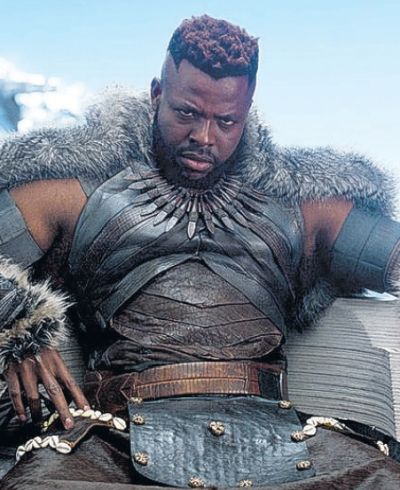 Tobago-born US-based actor Winston Duke is receiving rave reviews for his role as the villain M’Baku in the Marvel blockbuster movie Black Panther, which opened on Friday to record audiences. In fact, Vanity Fair’s Yohana Desta rated him as one of the brighter stars of the film ahead of it’s opening. Following is Desta’s article on Duke. When Winston Duke was a kid—9, or 10, he’s not quite sure—an episode of Frasier changed his life forever. It was Season 8, episode 12, “The Show Must Go Off”—more specifically, the scene where esteemed British actor Derek Jacobi parodies himself by doing a schmaltzy rendition of Hamlet, yowling, “I die, Horatio!” “I ran around the house performing the bad Hamlet for a long time,” Duke says, chuckling. “I don’t know what it is about that episode, but it stuck with me.” Two decades and two acting degrees later, the 31-year-old is, at long last, set to make his feature film debut in Marvel’s latest and greatest crown jewel, Black Panther. He’ll be introduced to millions of moviegoers and obsessive comic book fans as M’Baku, the leader of the distant Jabari mountain tribe and a villainous foil to Wakandan king T’Challa—and they’ll watch as Duke nearly steals the movie out from underneath Black Panther himself. Duke is indelible in a role that’s been thankfully re-imagined for the screen. In the Black Panther comics, M’Baku is a classically jealous rival, itching to take the crown from his arch-nemesis. In the film, directed by Ryan Coogler, M’Baku is still angsty and ambitious, but his actions are grounded in a loyalty to his people above all else. When he first read the film’s script, Duke noticed straight-away that M’Baku often says “we” instead of “I”—the symbol of a true leader. “He’s deeply attached to his community and the welfare of his people,” the actor says. “This is a lot more than I could have ever expected, especially for my first role.” As M’Baku, Duke is an instantly fearsome presence, towering over T’Challa with his six-foot-five frame. But underneath that roiling fury is the sensitivity of a schoolboy who loves Frasier and a clever sense of humour (deployed with some of the film’s best one-liners), which turns him from a cardboard villain into a sensational fan favourite. And it doesn’t hurt that M’Baku is also broadly handsome, with a formidable shape-up, a spruce beard, and a marquee polish—in other words, a royal Wakandan thirst trap. The Jabari tribe is known for worshipping the gorilla god Hanuman; in the original comics, M’Baku was actually introduced as “Man-Ape,” a name abandoned by the film adaptation for obvious reasons. But by contextualising the Jabari religion, Duke found an elegant way to sidestep negative or racist perceptions: “They haven’t been affected by colonialism and all the narratives that are associated with developing a sense of inferiority and people comparing them to animals,” he says. “To them, this is just who they pray to, and they find their strength and agency in this religion. So being a bit gorilla-influenced was a sense of pride for them.” He also came up with certain ape-inspired characteristics for the film, including a scene in which the Jabari men grunt at an outsider who speaks without permission—a threatening cue for that person to shut up. To find M’Baku’s voice, he researched and imitated Nigerian accents, further separating the character from the South African-inspired T’Challa. It’s just one of many ways the Jabari differ from the city-based Wakandans, who largely worship the panther god Bast. “The panther is sleek, the panther is sneaky, the panther is covert—meanwhile, the gorilla will show up and bang on his chest and make noises to warn you about what is about to happen if you continue to cross the line,” Duke says. “We don’t hide, we don’t sneak. We come through the front door.” Duke grew up in Tobago, in a small village called Argyle; a light accent still colours his voice. His mother worked for the government and had a restaurant on the side that often reeled in tourists. When Duke was a kid, he would show people to their tables, quickly learning how to charm strangers. When he was 9, his mother sold the restaurant and all their earthly possessions and moved the family to a studio apartment in Brooklyn in order to support Duke’s older sister as she pursued her dream of becoming a doctor. As she shuttled back and forth to the City College of New York, Duke withdrew into himself, spending most days after school going to the library or to a local comic-book store called Winston’s. (“Serendipitous,” he says.) That adolescent-onset introversion, however, stayed with him through high school, until one of his Spanish teachers noticed that he came alive whenever he had to make presentations to the class. She signed him up for the theatre club and he never looked back, going on to study theatre at the University of Buffalo. He took a year off to hone his craft in Baltimore, then journeyed north again to enrol in the Yale School of Drama, where he became “really close friends” with an upper-classman named Lupita Nyong’o—the future Oscar winner and his eventual co-star in Black Panther. They were both members of Folks, an acting club on campus for students of colour, which was co-founded by Yale alum Angela Bassett—who, yes, is also in Black Panther. During the first cast dinner for the Marvel movie, Duke made sure to seek Bassett out and thank her for the legacy she had left behind at Yale. From there, Duke immersed himself in Panther—embarking on a two-month-long training session with Boseman, talking shop with screenwriter Joe Robert Cole, and secretly geeking out about the set with Daniel Kaluuya, another cast member with limited blockbuster experience. “He’d come over to me and he’d go, ‘We’re in this. This is mad.’” Before Black Panther, audiences might have seen Duke making the rounds on network shows: Modern Family, Person of Interest, Law & Order. In order to win the part of M’Baku, he had to audition four times over the course of three months, getting put through the ringer by Coogler. “He took me in every direction known to man with the character,” he says. Sometimes, he’d sneak glances at the filmmaker and realise that Coogler wasn’t even looking at him, but rather looking down and listening to the performance—sussing out “the patterns and the musicality,” Duke guesses. In Duke’s estimation, Coogler felt a special affinity for the Jabari men, and would often rouse the cast and crew on a long day by performing the tribe’s glorious call and response. “He’s such a Jabari man,” he says. “He’s got the full beard, strong hair, very present. All these things. That’s a Jabari warrior right there.” Duke cracks up at the suggestion that once the film finally hits theatres, the Jabari tribe might also be claimed by Omega Psi Phi, the black fraternity whose members are usually referred to as “Que Dogs”—and are known for barking and a general rebelliousness. He takes the joke, and we run with it; the female warriors of the Dora Milaje are obviously hip Deltas, while Nyong’o and Bassett’s characters are prim Alpha Kappa Alphas. It’s just another example of the way Black Panther is sure to be sewn into popular culture once it’s released. Duke can already feel the threads of his old life coming loose, can already sense pedestrians looking at him just a little bit longer when he’s on the street. “My life is changing,” he says calmly. “I’m becoming a lot more watched, and I can tell.” Source: Guardian, Feb 18, 2018.
0 Comments
With Machel Montano and Superblue winning the 2018 Road March race, here are some facts about the Road March that might interest you.
1. The late Lord Kitchener has the most Road March titles - 11. Superblue is now second with 10 and Machel Montano 3rd with 9. 2. Only four women have ever won the Road March - Calypso Rose in 1977 (Give More Tempo) & 1978 (Come Leh We Jam), Sanelle Dempster in 1999 (River), Fay-Ann Lyons-Alvarez in 2003 (Display), 2008 (Get On) & 2009 (Meet Superblue), and Patrice Roberts in 2006 (Band of the Year which was done together with Machel Montano). 3. The Road March was won by two bands, instead of individuals or duets, on two occasions - The Obernkirchen Children's Choir in 1955 with "The Happy Wanderer" and Ultimate Rejects with "Full Extreme" led by MX Prime in 2017. 4. There has only ever been one tie for Road March - 2000 Superblue "Pump Up" & Iwer George "Carnival Come Back Again". 5. The Road March was won by duets on only three occasions - 2006 by Machel Montano and Patrice Roberts "Band of the Year", 2010 by JW & Blaze "Palance" & 2018 by Machel Montano & Superblue "Soca Kingdom". 6. There were two Road March competitions and two Road March winners in 1953 Vivian Comma "Madeline Oye" & Spit Fire "Bow Wow Wow" and in 1957 Lord Christo "Chicken Chest" & Nap Hepburn "Doctor Nelson". 7. Lion holds the record for most consecutive wins, winning four straight Road March titles in 1935, 1936, 1937 & 1938. 8. For 14 years, between 1963 and 1976, there were only two Road March winners - Kitchener (10) and Sparrow (4). 9. The song played the most ever to win Road March was Full Extreme with 556 plays followed by Palance with 417. 10. There were no official Road March titles between 1942 and 1945 because World War II meant no official Carnival. Source: CNC3 Conceived by rape, born on a cotton plantation, never certain who her father was, abandoned by her mother, abused as a child because she was "yaller" and was forced to live in the crawl space under the house with the cats.
She rose to become an internationally beloved singer, dancer, actor, and comedienne. She was an anti-war activist and member of the Women's International League for Peace and Freedom, who gained the wrath of President Johnson and was harassed for years by the FBI. A vocal advocate of LGBT rights. Asked about her following from and affinity for the gay community, she said, "We're all rejected people, we know what it is to be refused, we know what it is to be oppressed, depressed, and then, accused, and I am very much cognizant of that feeling. Nothing in the world is more painful than rejection." Eartha Kitt. SHE PERSISTED.  Turtle conservationist and chairman of the Grande Riviere Nature Tour Guide Association Len Peters, has been named the 1st Commonwealth Points of Light Award Recipient 2018. The Points of Light awards is a special series of awards recognising inspiring volunteers from the 52 countries of the Commonwealth. Peters protects 20,000 turtle nests yearly, and has even had his work featured on BBC’s ‘Blue Planet 2’ with Sir David Attenborough. The conservationist was recognised by Queen Elizabeth II on Thursday and named as the recipient of the award in honour of his exceptional voluntary service protecting endangered turtle species. The Queen’s recognition of Peters’ work comes as she offers her thanks to inspirational volunteers across the 52 Commonwealth nations for the difference they are making in their communities and beyond – as part of the lead-up to the Commonwealth Heads of Government Meeting in London April 19-20. In making the announcement, the British High Commission said Trinidad and Tobago is now home to one of the densest leatherback nesting beaches in the world, thanks to Peters’ educational work in local communities and regular patrols of the country’s beaches. The Commission added that the Heads of Government meeting will celebrate inspirational acts of volunteering across the Commonwealth and help inspire others to make their own contribution to tackling some of the greatest social challenges of our time, as these stories of service are shared. Peters, on receiving the award, is quoted as saying that he was honoured to receive the prize on behalf of the dedicated members of his organisation. He added that the award recognises many years of dedicated voluntary service performed by him and the members of his community in protecting the environment and creating sustainable livelihoods. Peters said he hopes that his acceptance of the award would, in some small way inspire others to see the value of voluntary service. Source: The Loop, February 5, 2018.  Is an alternative means of transport on the Tobago airbridge over the horizon? Well, if Raymond McMillan has his way then the answer is yes. A trip to Tobago may cost twice as much as you pay now though. McMillan is the chief executive officer of Sterling Tobago Airways Limited, trading as Tobago Airways, and he believes the national carrier Caribbean Airlines needed competition on the domestic airbridge. McMillan is currently looking for investors to help fund this idea. For investments of US$100,000 and over returns on investment are negotiated on a case-by-case basis. McMillan believes Tobago Airways’ estimated profit after five years will be around US$19.5 million. The initial contract for a plane will be with Airline Solutions Ltd, a company registered in the UK. Social media was abuzz yesterday when the front page of the Tobago Airways document seeking investors was shared. “Something new and exciting is coming soon,” the document stated. The T&T Guardian reached out to McMillan for information on the venture but he said he was having a board meeting at the Magdalena Grand Beach & Golf Resort. According to the Tobago Airways website “something new and exciting” is coming by March 1. McMillan is looking for investors for what he deems a “necessary ‘shift’ in the airbridge between Trinidad and Tobago which has been a ‘sour point’ for over 30 years”. In recent times issues surrounding the Tobago airbridge have come to the national fore, especially in light of difficulties experienced on the seabridge. CAL recently issued a release showing that its performance on the Tobago airbridge has been 86 per cent above industry standards. The national airline also implemented a $50 change fee for passengers missing or changing their confirmed flights. According to a recent Parliament Joint Select Committee, 52 per cent of CAL’s flights are operated on the domestic airbridge and approximately TT$41 million was allocated for CAL as the subsidy on the airbridge for 2017. The subsidy does not cover the entire shortfall between the fare charged for flights along the airbridge, and the cost of running the air bridge, and therefore, the route is unprofitable. Return tickets on CAL for the Tobago air-bridge cost $300. Tobago Airways tickets are expected to cost around $600. Source: The Guardian, January 31, 2018 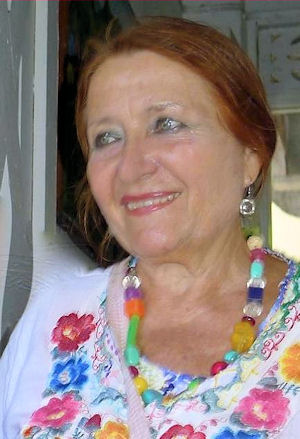 Luise Kimme died far from her German motherland five years ago. But she was far from alone. When the misery that is colon cancer finally claimed her body, Kimme was in the living room of her Tobago home, looking out to Mt Irving Bay, surrounded by her art and her beloved dogs. And Kimme,74, had artist Dunieski Lora Pileta as a caregiver and confidante for six years before her passing. Hours before she died, he had left her and travelled to Trinidad to buy the materials for a school of art they intended to open at her Museum of Art and Sculpture.  That was in April 2013. Much has happened since. Not all of it encouraging. But there is still a chance that her plans to give back to the people of her adopted island, could be realised. Born in during World War II and raised in Berlin, Kimme travelled the world teaching and working, including with the Rasta and the Reggae in Jamaica and the Maroons of Suriname, before finding Tobago in 1979. She never left. Her sculptures of bronze and wood, the paintings, murals and books had brought her worldwide recognition. But it was Tobago that some of her finest work would be done in the studio of that hillside property below the village of Bethel, where she honoured the people of Tobago, its history of enslavement, the religious beliefs, folklore, superstitions and culture. The Tobagonians were the models for some of her sculptures, inspired the paintings, and they built her home and studio. And the island's stray dogs that she found in the village hungry and diseased, became her 'children'. They too were made timeless in her art. Five years later, several of her dogs are still there, cared for by Dunieski who is now the artist in residence at “The Castle”, now owned by Kimme's sister Ilse. It is a place largely untouched since Kimme's passing, containing the detritus of a frantic life, half-done projects, personal possessions, a place that will leave you awe struck. And this is how it will remain, said Dunieski. He is Cuban, only now mastering the English language, and willing to partner with those who knew and loved Kimme, and who want Tobago to benefit from her influence. Dunieski was born in Santiago de Cuba, he told us. “And from very early in life I was doing art, carving with clay, using bricks and stones to make things, from the age of eight” he said. “I was discovered and brought to the art school and passed the elementary level. If you passed you went on to the academy where you would do a test to go on to the university”. Dunieski had become skilled in the ancient art of lost-wax casting, by the time Kimme found him 17 years ago. She was in Santiago de Cuba for the annual International Caribbean Festival and was in search of someone capable of doing bronze casting. The two would work together until her death, with Kimme travelling frequently to Cuba to learn to work with beeswax. Said Dunieski: “My first time in Tobago was about eight years ago. I visited for three months, After that I left and I went to Europe, Spain …When she got sick she called me. She had colon cancer that would metastasize all over her body. (At the time) I was in Martinique doing a ten metre monument near the airport. She wanted me to come”. Dunieski, a 42-year-old married father of three girls, said he considered it a privilege. “We were close. In Cuba, we would go to parties, to dances, she was a professional (salsa) dancer. People thought we were like girlfriend, boyfriend. But no, she was like my mother. In Cuba, I helped her with plane tickets, and making links for her exhibitions in Havana and Santiago de Cuba, her taxi, (and) accommodation”. Six years ago, Dunieski came over to Tobago. “I was like her nurse. I couldn't speak a word of English then. And I had to go with her to the Oncology Centre in Trinidad to talk to the doctor, to get blood tests, to do this, to do that, then find my way to the guest house on Tragarete Road by getting a taxi. I was so afraid. But I learned”. Those who knew Kimme remembered her courage in the face of the disease. She continued working, and when she could no longer walk, she carved on her knees. The day Kimme passed away, Dunieski said he made her comfortable, before leaving for Trinidad. “We went to get the material and stuff to build, intending to open an art school here to teach people. We also wanted to make a theme park, with big statues two metres high to attract people, to help the tourism. And that same day she died. When I left, I said wait for me, I am coming back soon. But she was gone, and never came back”. As with many artists, Dunieski has grand ideas beyond the reach of many. One of them, he said, was shared some years ago, when Orville London was still the Chief Secretary of the Tobago House of Assembly and visited the museum along with some other island politicians. Dunieski had created a scale model in bronze of a planned monument to remember Tobago's slave and sugar plantation history. Ten metres high and erected in a prominent place, it would be an expensive project that would employ many, the sculpture to be unveiled on an Emancipation Day as an everlasting symbol of the African man's freedom and what it cost. London was impressed and considered it a project to pursue, said Dunieski. Nothing has happened since. Maybe there is someone out there willing to fund it. Meanwhile, the work created at "The Castle” continues to draw crowds at exhibitions around the world. “Shango” the bronze that visitors would have seen standing sentinel at the entrance to “The Castle”, is off to Stockholm, Sweden. The rest of the art, conjured in the minds of Kimme of Dunieski, is on that Tobago hillside, awaiting your visit. ..and teacher of the Prime Minister, Chief Justice and ministers of government Tobagonian Cyril Anthony Collier, 77, is a recent retiree of the University of T&T where he was a senior instructor in drama. Collier’s career in the field of education spanned over four decades where he served in the capacity of teacher/educator.
Collier earned his diploma in drama in education at the University of Newcastle–upon-Tyne, under the stewardship of world-renowned Dorothy Heathcote. He is also the holder of a Bachelor of Arts and Master of Philosophy in drama\theatre arts, which he obtained at the University of Exeter in the UK. Collier has been heavily involved in the cultural landscape of T&T having served as director /producer of the annual Carnival Sunday night Dimanche Gras show on numerous occasions and as an adjudicator in the Prime Minister’s Best Village competition. Collier has also served as a board member of the National Carnival Commission (NCC), a position which afforded him the opportunity to make an immense contribution to T&T Carnival. He has also served on the board of the Export Centres Company of T&T, assisting with the export of our local Carnival culture to Phoenix and Los Angeles. Collier was born in Lambeau, Tobago and attended the Lambeau Anglican School. He later attended Scarborough RC and Bishop’s High School. His teaching career commenced in 1962. His first teaching appointment was at the Bon Accord Primary School where he served for a period of four years before entering the Port-of-Spain Teachers Training College, graduating in 1967. Given his passion for the art form, upon his return to Tobago, Collier enrolled as a member of the Kilarney’s Dance Group and later formed the Phoenix Dance Company which outshone rivals at the Arts Festival for several years. Collier eventually returned to his alma mater when he received a teaching appointment at Bishop’s High School and taught geography and physical education. While at Bishop’s, he not only revitalised the drama club. Among Collier’s students during his tenure at Bishop’s High School were Prime Minister Dr Keith Rowley, Ivor Archie, Rennie Dumas, Dennis Moses and Eudine Job-Davis. Collier’s teaching career eventually took him to St Mary’s College. Here he had the privilege of teaching public servants as government ministers Maxie Cuffie, Stuart Young and Daryl Smith. After an extensive and prominent career in both primary and secondary education, Collier transitioned to tertiary education with his appointment as a lecturer at the Valsayn Teachers Training College. Here he taught geography and dance/drama. In 2006, when the Valsayn Teachers’ College was appended to the University of Trinidad and Tobago, Collier was elevated to the position of senior lecturer in drama. While at UTT, he guided his students into the production of numerous weddings to showcase the traditions and cultural differences of the diverse ethnic groups in T&T. Collier’s most recent contribution is the completion of his doctoral thesis at the age of 77. His dissertation is entitled Behind the Mask: A Phenomenological inquiry into the Meanings, Practices and Socio-political Relations of the Dimanche Gras Show from 1999-2015 in Trinidad. Collier has expressed is deep gratitude to professor Hollis Liverpool, Dr Rita Pemberton and Dr Hazel-Ann Gibbs De Peza. He also acknowledged professor Valerie Stoute for her support and encouragement throughout this journey. As for his plans for the future, Dr Collier would like to publish certain aspects of his doctoral dissertation and is currently working towards achieving such. “I guess once an academic, always an academic,” he concluded. Source: Shastri Boodan. Trinidad Guardian, January 3-, 2018  Ottawa, Ontario January 30, 2018The Government of Canada is committed to build a better, more inclusive country that recognizes the contributions of all, and creates better opportunities for more Canadians. The Prime Minister, Justin Trudeau, today announced the Government of Canada will officially recognize the International Decade for People of African Descent. This Decade, which spans from 2015 to 2024, is an opportunity to highlight and celebrate the important contributions people of African descent have made to Canadian society. It also provides a framework for recognition, justice, and development to fight racism, discrimination, and the ongoing inequalities that Canadians of African descent face. The Government of Canada has heard from concerned citizens and organizations from across Canada, including the Federation of Black Canadians, that we need to do more to work with and support Canadians of African descent. In recognizing the International Decade, the Government of Canada commits to a better future for Black Canadians. This means learning more about the issues that affect Black Canadians, including improving research and data collection, so we can better understand the particular challenges they face. Mental health challenges and overrepresentation in the corrections system have been raised in particular by community leaders as barriers to Black Canadians experiencing full and equal participation across society. Over the past two years, the Government of Canada has taken concrete measures to fight inequality and improve the lives of all Canadians, including those of African descent. We have helped parents with the high cost of raising kids through the Canada Child Benefit, and expanded the Canada Pension Plan so more people can retire with security and dignity. We have also made significant investments in student grant programs, mental health initiatives, and affordable child care, and introduced a National Housing Strategy that will solve housing security for many vulnerable Canadians. The Government of Canada will continue to build on these efforts, and create a country where more Canadians have a real and fair chance at success. “Today is an important day for Canada. Our commitment to the International Decade will help us better address the very real and unique challenges that Black Canadians face, and bring us closer to a more just and inclusive country.” —The Rt. Hon. Justin Trudeau, Prime Minister of Canada
|
T&T news blogThe intent of this blog is to bring some news from home and other fun items. If you enjoy what you read, please leave us a comment.. Archives
May 2025
Categories
All
|
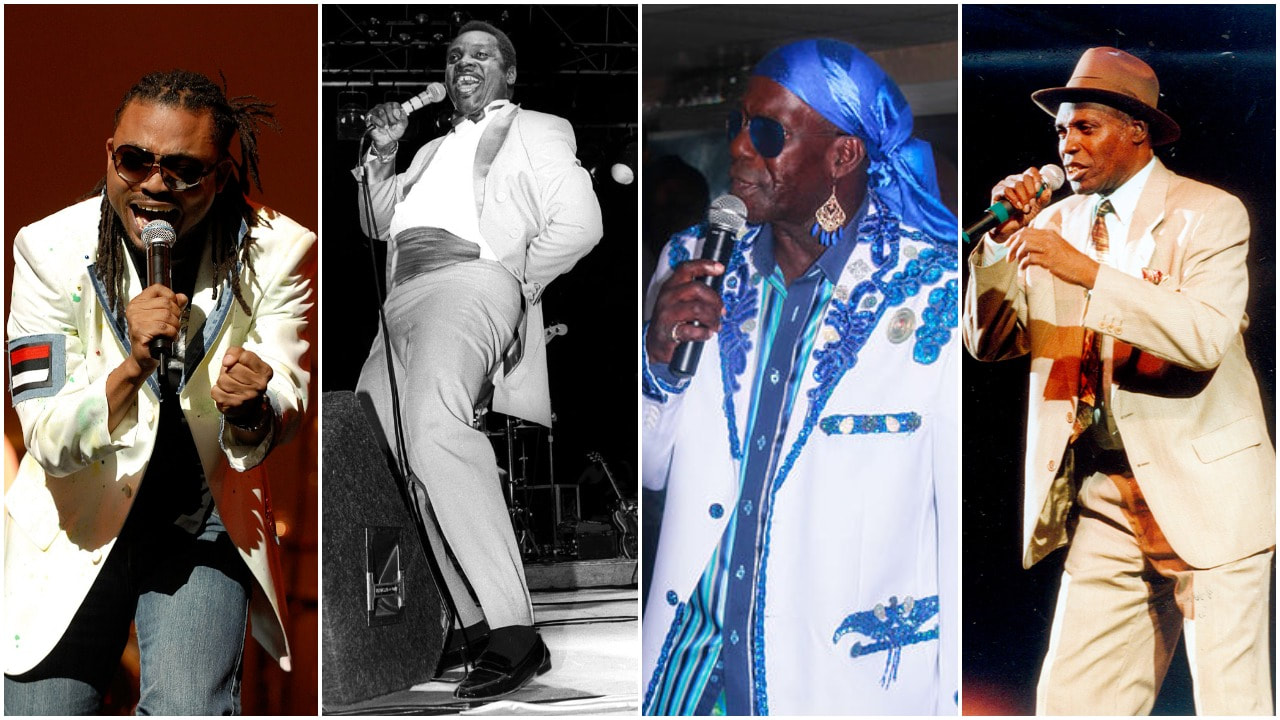
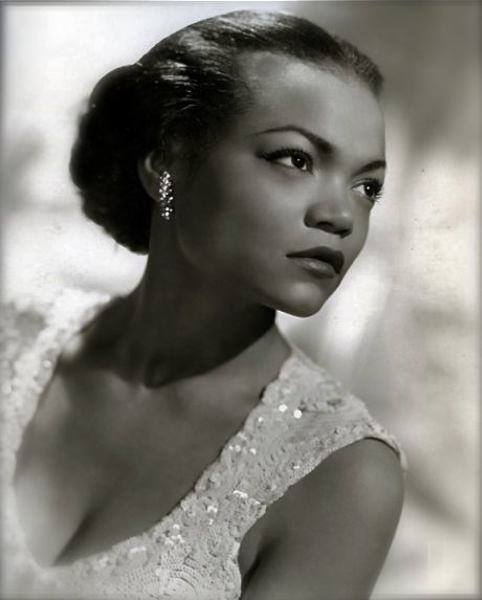

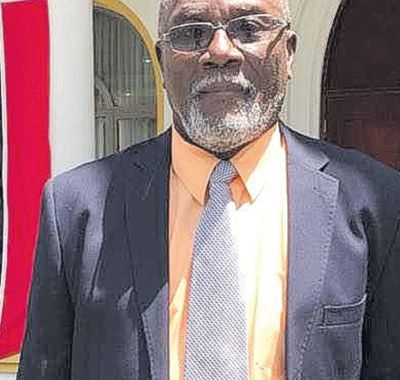
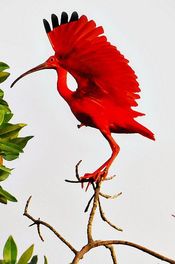
 RSS Feed
RSS Feed